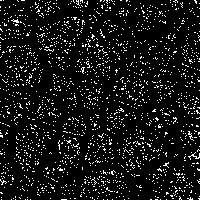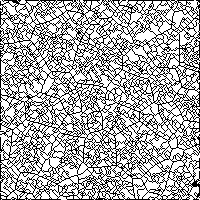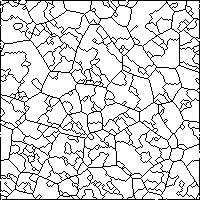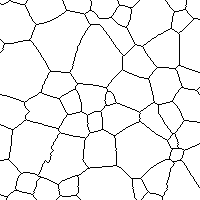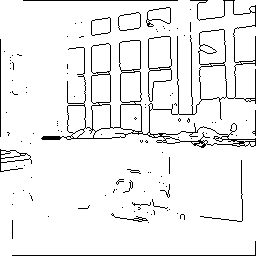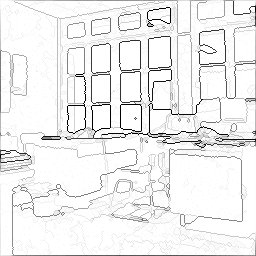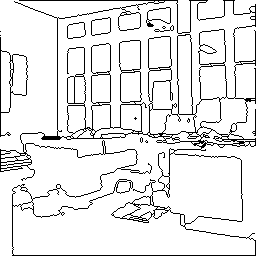CROSS-SECTION TOPOLOGY: OVERVIEW
We extended, in [BEC97], the topological concepts of the 2D binary images to the 2D graylevel images, i.e. to functions whose field is Z2 (this work can also be extended to the functions whose field is Z3). For that we consider the different "cross-sections" of a function: let F be a 2D graylevel image, i.e. a function of Z2 in Z, we call cross-section of F at the level K the subset of Z 2: FK = { X in Z 2, f(x) > = K }. We say that a transformation "preserves the topology" of F if this transformation "preserves the topology" (in the binary sense) of all the cross-sections FK, for any K in Z . The concepts of destructible point and constructible point generalize, within this framework, the usual concept of simple point.
Thanks to these notions, we proposed new image processing operators based on topology preservation or controlled modification [CBB01,BEC97]. We give below two examples of such operators.
One obtains a homotopic kernel of an image, by selecting a destructible point, by lowering the value of this point down to a value where it is not destructible any more, and by repeating these operations until stability (fig. 1b). We proposed several concepts of homotopic kernel, and defined filtering operators on such kernels. This enabled us to segment graylevel images under the control of a single parameter (fig. 1c,d).
|
When one meets in images some elongated and thin objects, it is frequent that such objects are "cut" by the effect of the noise, and one would wish to be able to reconnect these objects. If one regards an image as a topographic relief, an elongated object can be seen like a crest, and the reconnection of this object may be achieved by detecting and eliminating narrow passes in the crest. Within the framework of the cross-section topology, we propose an effective and rigorously defined method to perform this task (fig. 2). This method applies in particular to gradient images, which by nature consist of thin lines corresponding to contours of the objects of the original image (fig. 3).
|
|
Site info
© 2007-2008 A2SI Lab.





